THE BEFORE TRILOGY: The Criterion Collection Of A Collective Masterpiece
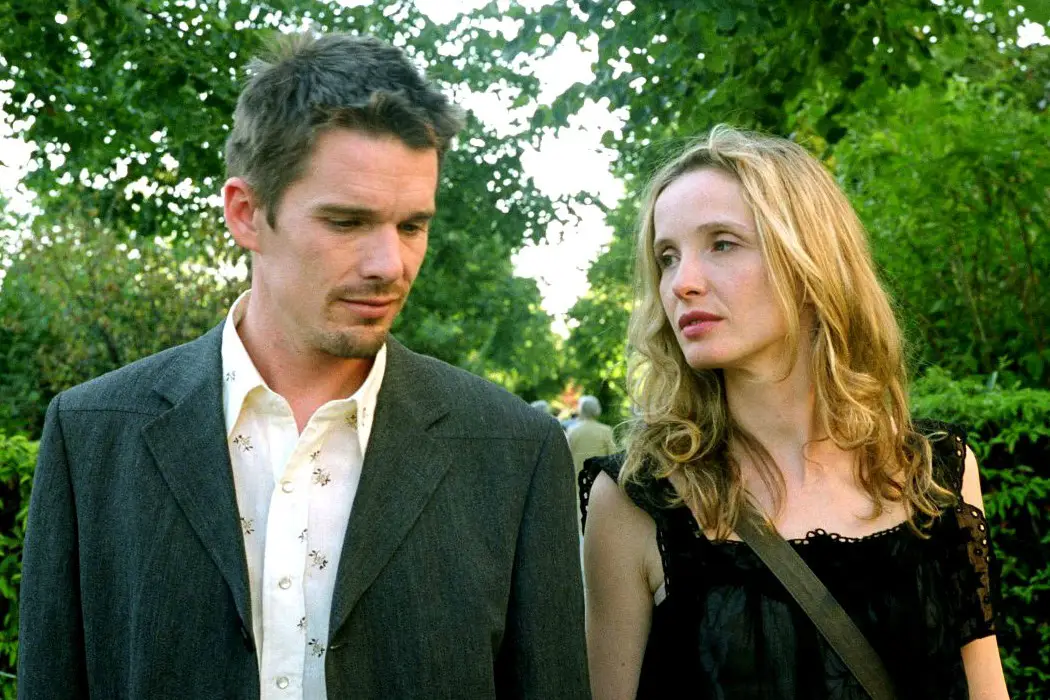
Alex Arabian is a freelance film journalist and filmmaker. His…
The Criterion Collection, known for redistributing historically and culturally significant films worth preserving, released Richard Linklater’s The Before Trilogy on February 28, offering audiences a digitally remastered version of each installment, giving old fans of the trilogy a new look at a classic series, while introducing it to an entire new generation of film lovers. Linklater almost singlehandedly revived and redefined the independent film scene in the 1990s, but the cultural impact of this innovative trilogy will last forever.
His breakout directorial effort, Dazed and Confused, launched the careers of Matthew McConaughey, Parker Posey, and Mila Jovavich, and became a staple of a new American voice in independent cinema characterized by realism. Just as Danny Boyle did in the 1990s with Trainspotting in reflecting the UK counter-cultural movement, Linklater explored the revolting youth of the 1970s through high school characters. This era very much captures the lingering effects of the 1960s American counter-cultural hippie and anti-establishment movement.
But it was Linklater’s Slacker and The Before Trilogy, expressing the collective inane, observations of middle-American suburban middle-class, that inspired an entire generation of filmmakers and various indie film movements in decades to follow, including mumblecore in the 2000s. It was his first foray into juxtaposing cinematic time with realtime, utilizing time as a tool for character development. With Before Sunrise, Linklater shifted his career path significantly and began to showcase his range. The characters of Jesse and Celine are well-developed, realistic, and conveyed through nonchalant and naturalistic interactional and reactionary performances by Ethan Hawke and Julie Delpy, respectively.
Before Sunrise
Much like Linklater’s earlier work, Slacker and later work, Tape, Before Sunrise was technically and narratively experimental. It dared to focus solely on two characters in every frame, primarily walking and talking about subjects ranging from pet peeves, to gender constructs, spirituality, politics, love, and passion.
The characters of Jessie and Celine are two young adults in there early 20s, still figuring out their respective roles and ways in life. They are from two different countries, the U.S. and France, but both share much of the same apprehensions and unease regarding society, bonding over endearing disagreements. These two characters are very much representative of the youth of the 1990s in their shared critiques of the current societal status quo, allowing Linklater to explore familiar themes.
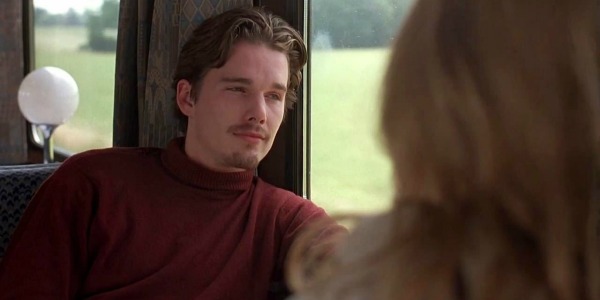
Virtually every other character is not an actor. This style of storytelling is called Neo-Realism, stemming from the Italian Neo-Realism movement in literature and film spanning the pre to post WWII era. This genre of film used unadulterated settings and real people/ non-actors as secondary and tertiary characters. Linklater was one of the first filmmakers to harken back to this movement’s style in filmmaking, particularly that of Roberto Rossellini and Vittorio De Sica, whose film Ladri di biciclette (The Bicycle Thieves, 1948) parallels Before Sunrise’s plot, structurally.
One could discern why most large studios would pass on this opportunity, because it might sound boring out of context and without knowing those involved behind the project. Still, Castle Rock Entertainment and Columbia Pictures took a chance on this now classic, which sits at number 216 on IMDb’s list of Best Film’s of All Time. Linklater was one of the first filmmakers to begin a narrative shift in the film industry that is now occurring at an increasingly fast rate.
The Beginning Of A Great Idea Without A Solution…Yet
Filmmakers are forgoing corporate, commercial studios for more “mom and pop” independent production companies, which can reach a far wider audience by being released on digital streaming platforms. They want to make films on whatever budget they can, while having the most creative freedom and widest distribution; it is the ideal business model. It is something that Fox Searchlight first sought out to be, and certain studios like Castle Rock and Columbia tried out, but eventually joined the ranks of other big studios because they did not have the proper distribution model at the time, as technology simply did not allow for it.
Luckily, Linklater was a good enough filmmaker that he was able to secure the financial backing needed (shot on approximately a $2,500,000 budget) for wider distribution, making this small, intimate story accessible to audiences all over the world. The $5,000,000 plus box office gross is modest, but it was the critical success and industry impact of this film that leaves its lasting legacy.
Delpy And Hawke – The Beginning Of An Iconic Lifetime Of Collaboration
The film blossomed when Hawke and Delpy became attached to the project. At the time, it was meant as a one-off film with no sequels intended. Their instant chemistry and offscreen bonding marked a lifelong friendship both between the two actors and Linklater that, along with the first film’s critical success, would eventually prompt two more sporadic sequels, both coincidentally nine years apart.
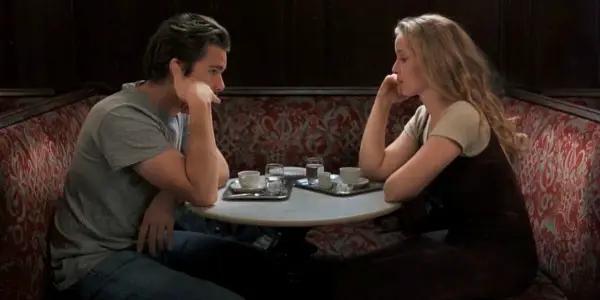
As the series progressed, Hawke and Delpy became more involved in their characters, and would write their own nuances and subtleties, which would add to the realism of the trilogy. Hawke has since gone on to write and direct a couple of films, while Delpy wrote and directed the acclaimed Two Days in Paris and Two Days in New York series, undoubtedly taking influence from her frequent collaborator, Linklater.
Locations in Before Sunrise are intimate, minimal, and distinct. Our characters first meet on a train after Jesse convinces Celine to get off with him in Vienna until his plane ride the next morning. This spontaneity adds a wonderful aloofness to the understated film. Taking the viewer through a series of places throughout the city including a restaurant ferry, the steps of an old building, a mundane alleyway, a secluded cemetery, a record store, a carnival with a ferris wheel, a cafe, a walk along the Wein River, and the city park where the two soulmates made love, Linklater creates a surreal, fairytale experience to emulate the euphoric feeling of young love spurred by a surprising, chance encounter.
A Fantasy Rooted In Realism
Let us deconstruct Before Sunrise. It is very much a fairytale, stripped of its realism, when you look at the bare bones of the story. Jesse is a naive American student abroad, Celine is the cute foreign woman, the two fall in love but must part ways to (possibly) never see each other again. Boy meets girl, boy falls in love with girl, the love is forbidden. It is a variation of Romeo and Juliet, stripped of its Shakespearean embellishes. Aside from the fact that this has been, at some point, every person’s dream: to run away and fall in love with somebody from a far away land, the likability of the two main characters adds to the crowd-pleasing nature of the film, making its ending seem all the more “tragic.”
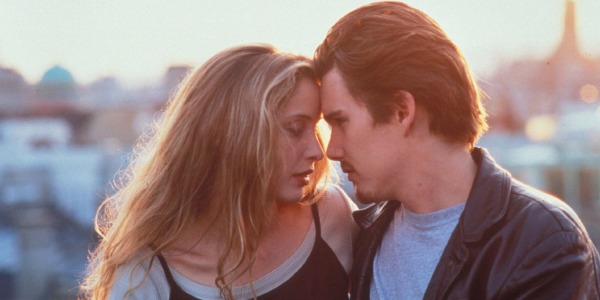
Though Jesse and Celine’s long, engaging conversations are so unforced, the ending, however beautiful and raw it is, felt as though it was conceived as a result of an idea to intentionally go against the typical “happy ending” Hollywood formula. Instead of picking a time and date 6 months in the future at the same train station, the two could have at least exchanged contact information and remained pen pals. Forced and a little unrealistic? Maybe. Effective? Yes. Jesse and Celine almost said goodbye without setting up that time and place six months in the future. They had this idea, Jesse’s tendency towards romanticism rubbing off on Celine, that if they saw each other again, it would ruin this whole experience and take away from the magic. Eventually, they succumbed to that idea and set up a time and a date to meet up.
Yet, either way, this questionable, open-ended ending was almost immediately confronted in Before Sunset by Linklater, Delpy, and Hawke, who were all co-screenwriters on the sequel.
Before Sunset
In the Oscar-nominated (Best Original Screenplay) Before Sunset, Jesse and Celine meet nine years later, and the first thing they talk about is the frustration and stupidity of their decision to not exchange information. This is Linklater and the cast’s way of breaking the fourth wall and also establishing a new tone. Instead of focusing on the magic of falling in love, the sequel focuses on the reality of what comes after: heartbreak, loss, regret, and confronting that desire to capture that same sense of magic of both the original film and Jesse and Celine’s mutual reminiscence of the events that occurred almost a decade ago.
Jesse visits France on the last leg of his tour for his new best-selling novel, a dramatized version of the events as told through his perspective of the first film. At one of his book signings, he sees Celine, and the two catch up. Celine is single and career driven, while Jesse is married with a son and bored. Eventually, after the nostalgia settles, we see the regret surface in the form of anger and arguments between the two characters. Although, this time around, the disagreements are not playful, they have more meaning behind them and nine years of pent up mutual frustration about the situation in general.
In Before Sunset, the viewer begins to see the blurred line between Jesse and Celine and Hawke and Delpy. At times one does not know where either ends or the other begins. Delpy and Celine are both feminists, humanitarians, and human rights advocates, while Hawke and Jesse share a passion for writing; in high school, Hawke’s aspirations were to be a writer before acting captured his interest. Each actor, however, makes sure to add self-deprecation and confront American and French stereotypes. Delpy’s Celine occasionally mentions her weight, exposing her insecurities, while Hawke’s Jesse would address the aging wrinkles in his face and turn his romanticized ideas on their heads, tackling flawed masculinity.
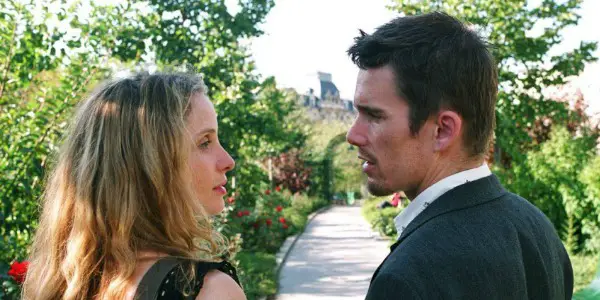
The two characters have moved on, but never felt anything like the way they did that fateful night in the first film. In subverting the audiences expectations by establishing a new tone, Linklater, Delpy, and Hawke let nostalgia come naturally. The magic sneaks in towards the third act as Jesse and Celine start talking again. After the film’s climax and second open-ended ending, the result of this unexpected sequel surpasses the first film. It does not linger on the sentimentality of revisiting these characters, but rather grows and ages with them. It is a natural progression that would continue in the third film.
A Waltz For The Night: Movie Magic – The Purest Depiction Of Love
After a great deal of fretting about the past, the two start crossed lovers begin a stroll around town, this time in Celine’s home town in Paris. And how great it is to see our two favorite intellectual, star-crossed lovers walking and talking again. Celine takes him on a series of touristy attractions while he keeps postponing his driver, who keeps informing him that he has a flight to miss, building suspense with the viewer. Are they going to give it a second try? Can the magic return to both between them and the screen and the audience? As Celine leads Jesse to her apartment, it becomes more readily clear.
Once at Celine’s apartment, the two engage in small talk before Celine sings him a song about their experience together through her perspective. A Waltz for a Night was written and performed by Delpy, who wrote several songs throughout the trilogy. It takes every bit of energy from Before Sunrise and channels it through Delpy’s simple yet mesmerizing waltz. As we see the expression on Hawke’s face, we realize he’s already made the decision to miss the flight. Right after the waltz ends, the credits roll, leaving the viewer wanting more. At only 80 minutes long, it is the shortest film of the trilogy, and an apt transition into its third, most fully-realized film.
Before Midnight
By Before Midnight, the screenwriting process has become so harmonious between the three friends that it feels like one, collective voice. By going with the flow, allowing the actors character the ability to craft their characters, Linklater has highlighted the importance of artistic inclusion in the film industry. The director and screenwriter deems it unwise for one to set out to become a screenwriter, but rather, it is better to approach an idea knowing that it will likely be a collaborative effort. This means learning to compromise, sometimes to the detriment of their artistic vision, sometimes to the betterment of the story.
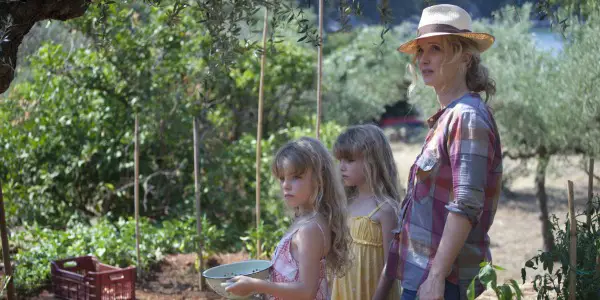
Indeed, Jesse did miss his flight, and the two never parted ways again. We meet Jesse and Celine, again, nine years later (incidentally, the nine-year separation between films was entirely coincidental), this time set against the beautiful backdrop of the Greek Peloponnesus. They are together but not married, as external, real-life factors like career focus, the unexpected birth of twins after they eloped in Paris, unfaithfulness, resentment, and the fact that Jesse has a child in Chicago came before the importance of marriage for the couple.
Jesse wants Celine to move, although it would mean sacrificing her career (she is now an environmentalist executive at a government-backed alternative energy company), which she has worked her whole life to achieve. Who would have thought that the young and innocent Jesse and Celine, both strangers in an the unfamiliar city of Vienna, Austria, nearly two decades ago, would have an unlikely future together that includes raw, real-life, and potentially unforgivable problems; the series’s gradual progression from fantasy-romance to romantic drama is what makes it so poignant and authentic.
From Young Love to A Natural Progression
Jesse and Celine’s respective evolutions to middle-aged parents are so believable, and, however sobering and depressing it might be, the path that led Jesse and Celine to where they are now in Before Midnight is one of the only logical paths that these two characters would likely have taken. In choosing to be with somebody form a different world, one must make sacrifices. In Before Midnight, all of these aforementioned problems build to an intense, almost relationship-ending fight where all emotions, every ounce of blood, sweat, and tears that Hawke and Delpy have shed developing these characters over the last 18 years are thrown on the proverbial table.
By this third entry, the magic of the prior two is a mere mist, albeit a rejuvenating one. The change of setting in Greece, the addition of a younger couple that symbolize Jesse and Celine’s former selves, and an older couple, who represent who Jesse and Celine have the potential to become, add that characteristic magic.
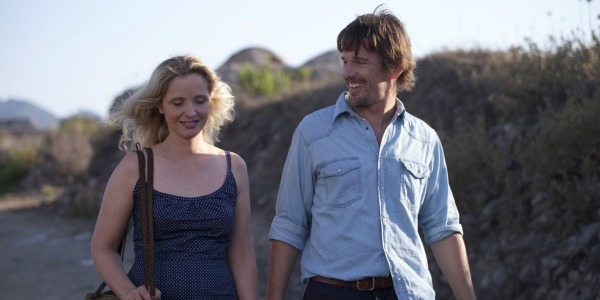
These additional characters offset the reality of Jesse and Celine’s relationship on the fringes in forms of comedic relief, moments of profundity through advice of the elderly couple, and alas, the moments, however brief in this one, where Jesse and Celine are walking and talking about aimless, intellectually stimulating topics. And to any critic who might deem their conversations too unrealistic and quick-witted to be taken seriously as real character interactions, they might want to read up on Ethan Hawke and Julie Delpy, both creative genius’s in their own right. It would not be unlikely that the two don’t have similar real-life stimulating conversations to those of Jesse and Celine’s over the course of this trilogy.
The Quintessence of Hawke And Delpy’s Collaborative Synergy
After 18 years of working together, The Before Trilogy’s Jesse and Celine are completely Hawke and Delpy’s in Before Midnight. It’s truly difficult to believe that their characters aren’t real people. As they’ve matured, professionally, Hawke and Delpy’s relationship has strengthened to the betterment of their collaborations together. In the end, the magic finally reappears. After having fought all night, the couple sit in silence, engaging in an old tradition of theirs, watching the sunset together, bringing the viewer back to the emotional levity of the first film. As they smile and gently whisper, “still there…still there…still there…gone,” until the sun disappears in the horizon. It’s an apt metaphor for their relationship, and offers yet another perfect ending.
Again the movie ends in a beautiful uncertainty, yet the audience feels emotionally fulfilled. I once asked Linklater after the premiere of Boyhood what he anticipates the next Before film will cover, to which he replied it is hard to say where the couple would be in another nine years. However, he did half-jokingly mention it would be interesting to explore them in the twilight of their lives. Until then, it feels right to let these characters be for while, and if there is a natural gravitation towards a story worth telling in their relationship, it would be a welcome return to the subject matter by the three creative minds behind the story, but if not, this trilogy provides a perfect ending to Jesse and Celine’s story, for now.
The Trilogy’s Critical Success Never Faltered, Nor Did Castle Rock’s Commitment
Before Midnight debuted at Sundance Film Festival in 2013, and was distributed by Sony Pictures Entertainment. It received an Oscar nomination which was shared by the trio. At this point in Linklater’s career, more production companies and distributors alike are willing to take a chance on him, given his nearly flawless track record.
The great thing about not planning a sequel is that ideas come naturally; sometimes time begets new ideas for old stories that is worth revisiting. Without having the pressure of a studio providing you a contractual obligation for more entries into a franchise, your ideas do not feel as forced. The idea for Before Sunset came naturally, as did that of Before Midnight.
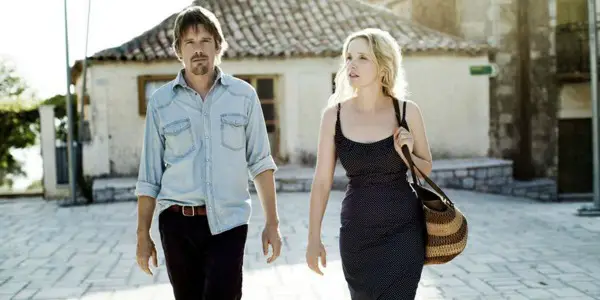
Another significant aspect of this trilogy is that it provided the foundation for and started a career-long exploration of themes and experiments of time and film. In this trilogy, we see a couple age 18 years over three films. Boyhood marked the pinnacle of Linklater’s exploration of time in film, which portrayed an actual actor aging from six to 18, filmed in realtime over 12 years.
It seems as though Rob Reiner’s production company, Castle Rock, was the only studio throughout the franchise that stuck with it and understood that its artistic value transcended its monetary value. The company was less worried about making money, and more interested in allowing the filmmakers room to express their voices and visions.
The Industry Solution – Digital Distribution and Online Streaming
Part of the beauty of filming in three different locations outside of the U.S., is that filmmakers can receive government grants, as they realize the mutually beneficial financial outcome and notoriety for the city and its culture. This is something that is lacking in the United States government, especially in 2017; it has consistently defunded the arts over the past 30 years, perpetuating this industry-wide shift from large studios to digital streaming services.
Companies like Netflix, Amazon, and Hulu reach an exponentially wider audience than the failed Fox Searchlight and Warner Independent Pictures (Warner Bros.’s attempt at making a feasible solution for independent filmmakers). Digital streaming is a win-win business model wherein both the filmmakers, production companies, and the distribution companies benefit. At the same time, this does not make theaters obsolete, as those that still wish to see the film in a theatrical experience, can pay to go to the cinema.
Extra, Extra, Read All About It! A Gold Mine Of Disc Features
The Criterion Collection’s The Before Trilogy release is not only a must have for fans of the franchise, but cinephiles in general. On top of the digital audio and visual enhancement of each film, the box set includes a new discussion featuring Linklater, Delpy, and Hawke, moderated by film critic Kent Jones, behind-the-scenes footage and interviews from the productions of Before Sunrise and Before Sunset.
Additional features include audio commentary on Before Midnight by Delpy, Linklater, and Hawke, which fans of the trilogy will not want to miss, as their insight is incredibly thorough. Viewers can expect a feature-length 2016 documentary by Louis Black and Karen Bernstein titled Richard Linklater: Dream Is Destiny, After Before, a new documentary by Athina Rachel Tsangari about the making of Before Midnight in Greece, new conversations between scholars Dave Johnson and Rob Stone providing analysis of Linklater’s work, an episode of the radio program Fresh Air featuring host Terry Gross, Linklater, Delpy, and Hawke, and Linklater // On Cinema & Time, a 2016 video essay by filmmaker Kogonada. Finally, an essay on the trilogy by critic Dennis Lim provides a thoughtful analysis of the reality of love in the context of The Before Trilogy.
Are you a fan of Linklater’s The Before Trilogy? Which one is your favorite? Do you want to see a fourth film, or is it better left as a trilogy? Tell us your thoughts in the comments below!
The Criterion Collection of The Before Trilogy was released on Blu-Ray and DVD on February 28, 2017.
Does content like this matter to you?
Become a Member and support film journalism. Unlock access to all of Film Inquiry`s great articles. Join a community of like-minded readers who are passionate about cinema - get access to our private members Network, give back to independent filmmakers, and more.
Alex Arabian is a freelance film journalist and filmmaker. His work has been featured in the San Francisco Examiner, The Playlist, Awards Circuit, and Pop Matters. His favorite film is Edward Scissorhands. Check out more of his work on makingacinephile.com!












